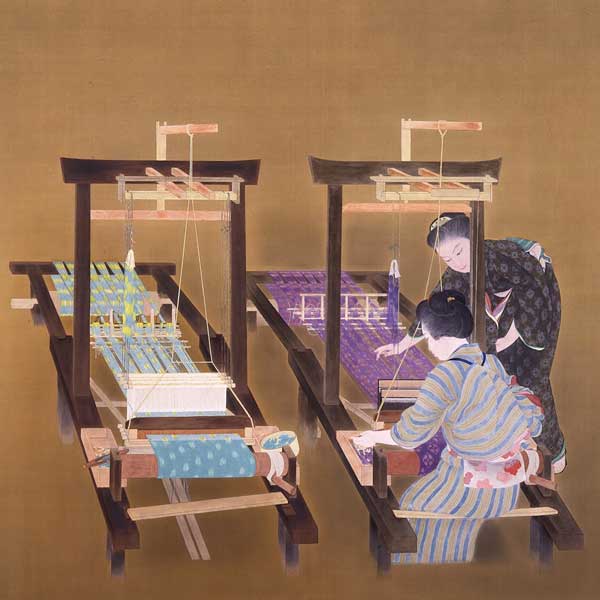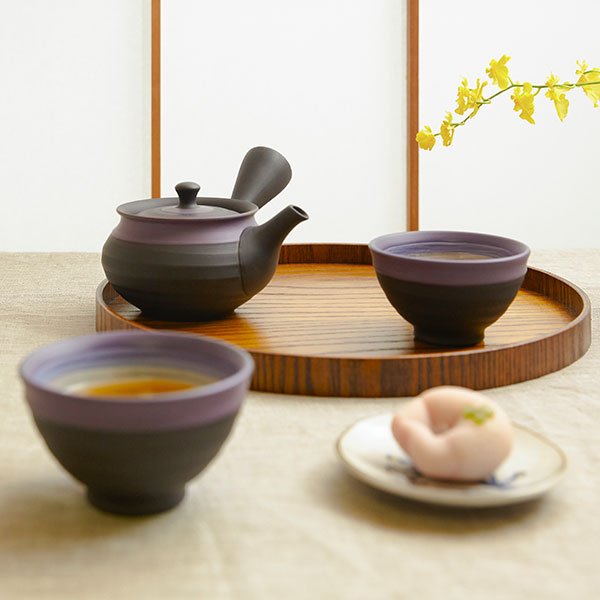What are Chochin? Everything You Need to Know About Japanese Lanterns
by David McElhinney | CRAFT
Chochin, or paper lanterns, are traditional Japanese lanterns, usually made of washi paper stretched over a bamboo frame. They are icons of traditional Japanese life, used since the 16th century to illuminate side streets, shopfronts and temple courtyards. Today, you’ll find them in various settings, from festivals and ceremonies to decorative items in homes and businesses, adding touches of class to lighting displays throughout the country.
What is a Chochin Lantern?
Chochin lanterns are usually cylindrical, with a wooden or bamboo base and a hoop at the top for hanging. Historically, Japanese paper lanterns were illuminated using candles or oil lamps, but modern versions may have electric bulbs or LED lights instead.
The size and design of a given chochin is largely at the discretion of the artisan who creates it. Lanterns come in various color schemes - often red, which symbolizes vitality and good luck, or white, for purity and new beginnings - with kanji or hiragana script on the outside.
The calligraphic characters used will usually indicate what the lantern is advertising - for example, 祭 (matsuri) indicating festivals, 商 (shou) indicating commerce or business, or やきとり (yakitori) for a restaurant specializing in grilled chicken! Higher-end decorative lanterns may also be adorned with special patterns or spiritual motifs to enhance their aesthetic appeal.
How are Japanese Lanterns Made?
Chochin paper lanterns are traditionally handmade using a combination of materials, like washi paper, bamboo, and sometimes wood or metal, in a method known as makibone-shiki (wound bone style). If you would like to find out more about washi paper, check out these 8 Things You Need to Know!
Below is a general overview of the process.
Frame Construction: The artisan bends thin, flexible strips of bamboo into a cylindrical shape, then secures them together with wire or string.
Paper Preparation: Washi paper is then used to cover the frame - the artisan may colour the washi using plant-based dyes or embellish it with decorative patterns. The paper is then cut into strips or panels of appropriate size for wrapping around the frame.
Wrapping the Frame: The paper is carefully wrapped around the bamboo frame, attached using an adhesive, and stretched taut to ensure a smooth and even surface. Depending on the desired appearance and durability of the lantern, the artisan may use multiple layers of paper.
Attachments: Bamboo or wooden rings are attached to the top and bottom of the lantern to provide structural support.
Decoration: The artisan may add more decoration, such as calligraphy and artistic flourishes, using brushes and stencils.
Lighting: If the lantern is designed to hold a candle or oil lamp, a metal tray may be installed to hold the light source securely. Otherwise, electrical lighting components such as bulbs or LED strips are added.
Where to Buy (or Make) Chochin Lanterns?
Tokyo
At Yoshinoya Shoten in Tokyo’s Kanda district, you can peruse the selection of elegant, (mostly) white lanterns aligning the shelves. Yoshinoya’s lanterns are undeniably sturdy - they have iron frames - and are renowned for the thick, calligraphic script used on the exterior, a centuries-old style known as Edo moji.
Tanakaya in Shinagawa Ward has been open for more than a century. Though the shop sells other traditional goods, like noren (half-length curtains), happi (colorful jackets worn at festivals) and lucky charms, it has a great selection of paper lanterns. Some are minimalistic, with a few kanji characters on a white paper background, others are covered in classic ukiyo-e prints.
At Ginzaya on Asakusa’s Kappabashi-dori, also known as Kitchen Street, you can find cheap and cheerful lanterns covered in food-related kanji, like 居酒屋 (izakaya), たこ焼き(takoyaki), 甘酒 (amazake), and 焼鳥 (yakitori). A good shop for beginners or casual buyers.
Kyoto
Kojima Shoten has been in the chochin trade since the late-18th century. Its lanterns are made using the traditional jibari-shiki method, which differs from the makibone-shiki style because the bamboo and the paper used are both relatively thick. Kojima’s artisans, a pair of brothers whose family opened the shop more than two centuries ago, fashion single strips of bamboo into individual rings, then fix them into place with string. The resulting chochin are sturdy but rustic, and are representative of a waning artform - only a handful of Kyoto lantern makers still use the jibari-shiki method. Workshops are available here upon request.
Takahashi Chochin, not far from Kyoto’s Nishiki Market, is a great place if you want to buy a lantern but can’t decide on a style. They sell large lanterns, decorative lanterns, ritual lanterns, Buddhist lanterns, funeral lanterns, handheld lanterns, lanterns of strange shapes and dimensions, and more. If you have specifications, you can make enquiries in advance by phone or contact form.
Mikuniminato (Fukui)
In Mikuniminato, an old port town in Fukui Prefecture that was one of Japan’s major trading hubs during the Edo period (1603-1868), the annual, three-day Mikuni Festival is the talk of the town. During the festival, giant floats topped by samurai dolls are paraded from the torii gate at Mikuni shrine and through the old-town quarter. Chochin lanterns are key to the festival, tied to the floats and illuminating the flagstone walking streets. Those interested in the area’s chochin craft traditions can take workshops at Itoya with Mariya Kojima, a lantern making master and one of the few women working in a male-dominated field.
Mito (Ibaraki)
Chochin lanterns in Mito, Ibaraki are also known as suifu. Symbols of balmy summer evenings, suifu are usually elongated and are crafted by affixing thin but tough paper onto a skeletal bamboo frame. Mito is one of Japan’s most famous chochin-producing regions, and the quality of the shops is befitting of this status. Check out Suzuki Mohei Shoten, Kageyama Rihei Shoten, and Aono Shoten for the best finds.
Yame (Fukuoka)
Yame in Fukuoka Prefecture has long been a heartland of washi paper production. So it stands to reason that entrepreneurial artisans would turn their attention to lantern making. Yame is blessed with the raw materials for chochin - bamboo (for the frame) and mulberry (for washi) - ensuring the craft has remained in rude health for centuries. Lanterns made for the O-Bon festival, in which the Japanese welcome back the spirits of their ancestors, account for 90% of the chochin production in Yame today. The style is particularly elegant, using translucent paper and simple decorative motifs. If you want to buy one for yourself, the Fukuoka Prefectural Tourism association has a list of Yame chochin shops on its website.
Hokuei (Tottori)
Tottori is Japan’s least populous prefecture, and even many Japanese know little about it, other than that it’s a great place to eat snow crab in winter, it has a dune system known as the Tottori Desert, and Gosho Aoyama, creator of the famous manga and anime series Case Closed, was born there. But Hokuei, Aoyama’s hometown, also has a history of chochin production. At Yurarin Studio, there’s a free-to-enter gallery with a vast array of paper lanterns on display and an adjacent workshop where you can try your hand at making a chochin of your own.
Mino (Gifu)
In Mino, a small city in Gifu Prefecture, lanterns are an integral part of life - so much so, that in 1995, the Japanese government designated Gifu chochin a National Traditional Craft. Gifu chochin are made using a delicate method, with a thin bamboo frame and a thin washi covering that’s decorated with flowers, landscapes and other spiritually significant designs. Isamu Noguchi, a famous sculptor, designer and architect, was particularly drawn to the style of lanterns in Mino, which in turn inspired local chochin artisans to draw on Noguchi’s work. Head to the Mino Washi Akari Art Museum to see some of the most elaborate and virtuosic designs, or Saiko Design if you want to purchase one of your own.













TRAVEL | March 15, 2024